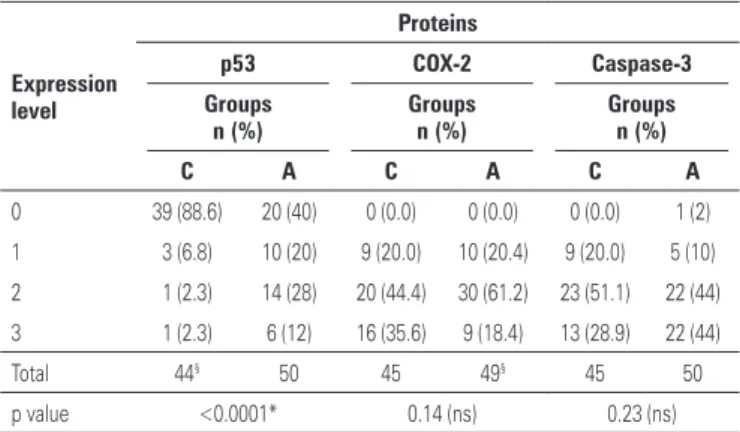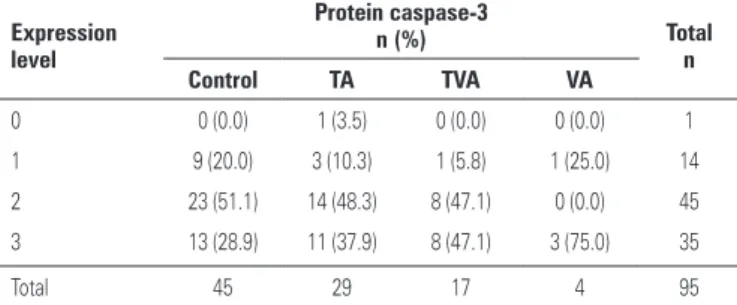Imunoexpressão das proteínas COX-2, p53 e caspase-3 em adenoma colorretal e mucosa não neoplásica
Texto
Imagem


Documentos relacionados
Chlorella vulgaris at 2 mg/ml (optimal dose) induced higher expressions of P53 (a), Bax (c) (proapoptotic) and caspase-3 (d) proteins in HepG2 cells compared to the control cells
Evaluation of the Presence of Human Papillomavirus (HPV) and Epstein- Barr Virus (EBV) and the Expression of the Proteins p53, p16, E-cadherin, COX-2, MYC and MLH1 in Oral
The probability of attending school four our group of interest in this region increased by 6.5 percentage points after the expansion of the Bolsa Família program in 2007 and
With the increase of matrine concentration, the relative expression level of Bcl-2 protein in CNE-2 cells was decreased, and the expression level of Caspase-3 protein was
The structure of the remelting zone of the steel C90 steel be- fore conventional tempering consitute cells, dendritic cells, sur- rounded with the cementite, inside of
DISCUSSION The expression of c-erbB-2 and p53 proteins showed a large variation between the non-neoplastic ducts and ductal carci- noma in situ components, but most of the
Expression of the A88V and G11R mutants resulted in elevated levels of the cleaved forms of caspase-3, caspase-8, caspase-9, and PARP, which are all markers of apoptotic
Objective: In the present study, the expression of anti-apoptotic (XIAP and Bcl-2) and apoptotic (cytochrome C, caspase 9, APAF-1), caspase 3 and the Smac/DIABLO genes related to